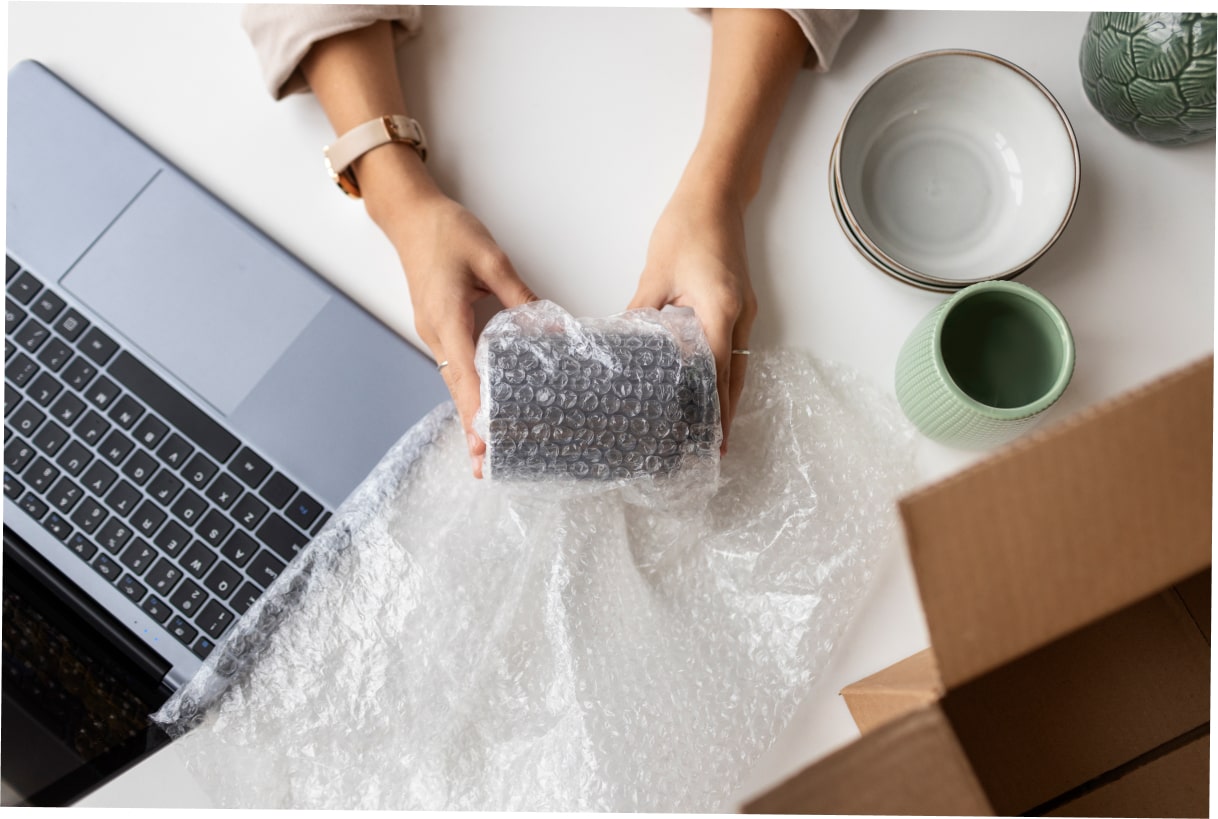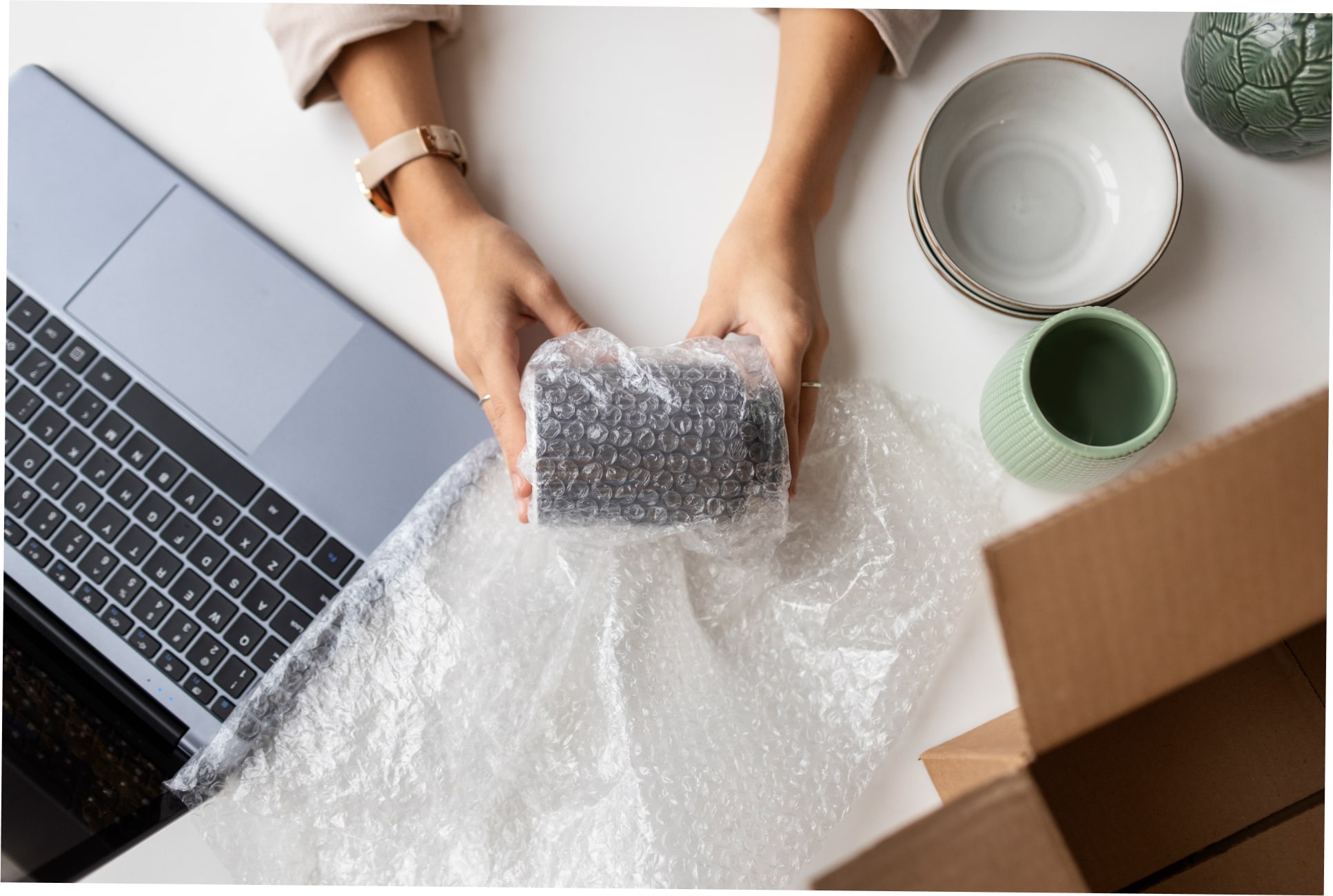Moving to a new home or office is an exciting experience, but it can also be overwhelming, especially when it comes to packing delicate and fragile items. From your prized china set to your grandmother’s antique vase and your child’s favorite toy, it’s critical to take the necessary precautions to safeguard these items during the move. This guide will give you valuable tips and tricks for packing fragile items so they arrive in perfect condition at their new location.

The Significance of Proper Packing Techniques
The success of your move is largely determined by how well you pack your fragile items. When handling delicate items, it is critical to exercise caution and avoid applying excessive pressure, which can result in cracks, chips, or breaks. You must use the proper packing materials, such as packing paper, bubble wrap, and foam peanuts, to ensure the safety of your items. These materials provide sufficient cushioning and support to aid in the prevention of damage during transit.
Expert Advice on Packing Fragile Items
Here are some of the best practices for packing fragile items:
- Wrap each item separately using packing paper, bubble wrap, or foam peanuts, making sure to provide protection for all sides and corners of the item.
- Label each box containing fragile items as “FRAGILE” using large and clear letters.
- Place heavier items at the bottom of the box and lighter items on top, distributing the weight evenly.
- Fill any empty spaces in the box with packing paper, bubble wrap, or foam peanuts to prevent items from moving during transport.
- Use sturdy boxes specifically designed for shipping fragile items, as these boxes are built to withstand the rigors of transit.
- Seal the boxes securely, ensuring that the tape is applied to all seams and corners of the box.
- Store fragile items in a cool and dry place until they can be loaded onto the moving truck.
What is the Best Packing Material for Fragile Items?
Choosing the right packing material for delicate and fragile items is critical to ensure their safety during the move. There are numerous options available, ranging from bubble wrap to packing peanuts and foam. But which packing material is best for fragile items? To answer this question, you must first understand the properties and advantages of each material.
Bubble wrap, for example, is an excellent choice for protecting delicate items because it provides cushioning and absorbs shock. Packing peanuts, on the other hand, are a less expensive alternative that may not provide the same level of protection as bubble wrap. Foam is another option that provides a secure cushioning effect, but it can be more expensive than other materials.
Finally, the best packing material for fragile items will be determined by the shape, size, and fragility of the item. For items that are prone to cracking or breaking, such as china and glassware, a combination of bubble wrap and foam is recommended for added protection. Packing peanuts can be used to fill gaps and prevent movement in items with more irregular shapes.
Finally, when packing fragile items, it is critical to use the proper packing material to ensure their safety during the move. Consider the properties and benefits of each material, and if necessary, combine materials to ensure the best possible protection.
How to Use Bubble Wrap for Packing Fragile Items
Bubble wrap is a versatile and widely used packing material for fragile items. Because of its cushioning effect and ability to absorb shock, it is an excellent choice for protecting fragile items during a move. Using bubble wrap effectively for packing fragile items, on the other hand, necessitates some attention to detail and a few key steps.
Here’s how to use bubble wrap for packing fragile items:
- Clean the fragile item before wrapping it in bubble wrap. Dust and debris can cause scratches, so it’s important to clean the item thoroughly before wrapping it.
- Cut a piece of bubble wrap to the appropriate size. Wrap the fragile item in bubble wrap, making sure to overlap the edges so that the item is fully covered.
- Seal the bubble wrap around the item by tapping the edges securely. It’s essential to use high-quality, durable tape that will not come undone during the move.
- Repeat the wrapping process for added protection. For especially fragile items, it’s recommended to wrap them in multiple layers of bubble wrap for added protection.
- Label the item clearly as fragile and place it in a sturdy box for transport.
By following these steps, you can effectively use bubble wrap to pack fragile items and ensure their safety during the move. It’s also a good idea to use other materials, such as foam or packing peanuts, in addition to bubble wrap for extra protection.
Final Thoughts
By following these guidelines, you can guarantee that your fragile items will arrive at their new location in pristine condition. Whether you’re moving to a new home or office, taking the time to properly pack your fragile items will reduce stress and minimize the risk of damage during transit. With these tips, you’ll be able to make your move as smooth and stress-free as possible. Learn more about packing and unpacking services













No Comments